Creation: Stellar Evolution Part II
 A guest post today from my brilliant husband, Gregg.
A guest post today from my brilliant husband, Gregg.
The 6 types of evolution taught as fact in the average public school today, the first 5 being types of Darwinian evolution, and the last being simple modifications within kind, or changes within kind, and not even really “evolution,” are:
- Cosmic evolution
- Stellar evolution
- Chemical evolution
- Abiogenesis—Life from non-life
- Macro-evolution
- Micro-evolution (Variations within kind, not really evolution)
Stellar evolution
Stellar evolution is the theory of the origin of stars, or how stars are born. The theories of stellar evolution can be largely separated into two categories. There are theories that fall into how stars “evolved” as part of the aftermath of the Cosmic Evolution brought about by the Big Bang, and there are other theories about how stars are “evolving” even today.
In my first few posts explaining some of the problems with Stellar Evolution, I detailed the logical problems with the theory and several scientific problems. One of the major conclusions I reached in my personal journey of discovery was that each and every single logical and scientific problem with the collective theories of Darwinian evolution amount to single limiting factors.
Any single limiting factor is enough to refute the entire theory.
 Say you were to dive into the ocean and discover an old sunken ship loaded with treasure. Say you theorized that the ship sank in the year 1700 exactly. Then, say I find a coin on board dated 1705, another dated 1715, and another dated 1720. Each single coin becomes a limiting factor that logically refutes your theory. There is simply no way that the ship could have sunk before 1705 since it could not have sunk before that 1705 coin was minted. Likewise, for the coins minted in 1715 and 1720. Each single coin is a limiting factor that refutes the theory of the 1700 sinking.
Say you were to dive into the ocean and discover an old sunken ship loaded with treasure. Say you theorized that the ship sank in the year 1700 exactly. Then, say I find a coin on board dated 1705, another dated 1715, and another dated 1720. Each single coin becomes a limiting factor that logically refutes your theory. There is simply no way that the ship could have sunk before 1705 since it could not have sunk before that 1705 coin was minted. Likewise, for the coins minted in 1715 and 1720. Each single coin is a limiting factor that refutes the theory of the 1700 sinking.
Suppose, though, that you have an agenda, a motive separate from pure discovery. Suppose that if the ship sank later than 1700, for instance, you could not claim any part of the loot. In that case, operating under the influence of your greed driven agenda, you might hide the newer coins, perpetrate fraud, alter the data, lie about the dates, lie about me when I present the coins as contradictory evidence, ignore the coins, or attempt to fallaciously appeal to majority in order to minimize the impact of the newer coins since, “We found thousands of coins dated much earlier than 1705. I think we can ignore this newer sample as irrelevant in that context.”
Since Darwinism amounts to a religious belief, the agenda is a philosophy of methodological naturalism in the greater religion of secular humanism. This is how Darwinists are able to ignore hundreds or thousands of limiting factors that refute their theory. They are able to set aside simple logic and reason to perpetuate this political and religious agenda.
Today, I will ignore all of the previously stated problems facing Stellar Evolution to demonstrate that the problems don’t stop there.
More Limiting Factors for Stellar Evolution:
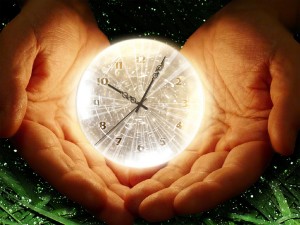 There has not been enough theoretical time to produce all the needed heavier elements that now exist. No one has ever dated the Big Bang at more than 20 billion years ago, and the date was recently lowered to 15 billions years ago. The first stars supposedly formed about 250 million years after the initial supposed Big Bang explosion. At some lengthy time after the gas coalesced into “proto-stars” or “population III” stars or “first-generation” stars, most of them are theorized to have exploded and then, 250 million years later, reformed into “second-generation” stars or “population II” stars. These are said to have exploded and reformed into “third-generation” stars or “population I” stars. Our sun is supposed to be a second- or third-generation star. Even accepting the impossibilities of the theory, we know from spectrographs that heavier elements are found all over the universe. Simple addition of 250 million year cycles adds up to a very limited amount of time for all of these long ago and far away fairy tales to have occurred.
There has not been enough theoretical time to produce all the needed heavier elements that now exist. No one has ever dated the Big Bang at more than 20 billion years ago, and the date was recently lowered to 15 billions years ago. The first stars supposedly formed about 250 million years after the initial supposed Big Bang explosion. At some lengthy time after the gas coalesced into “proto-stars” or “population III” stars or “first-generation” stars, most of them are theorized to have exploded and then, 250 million years later, reformed into “second-generation” stars or “population II” stars. These are said to have exploded and reformed into “third-generation” stars or “population I” stars. Our sun is supposed to be a second- or third-generation star. Even accepting the impossibilities of the theory, we know from spectrographs that heavier elements are found all over the universe. Simple addition of 250 million year cycles adds up to a very limited amount of time for all of these long ago and far away fairy tales to have occurred.
Where are the proto-stars today? There are no first-generation stars (population III stars) in the known universe. According to the theory, there should be “population III” stars, containing only hydrogen and helium, many of which exploded and made “population II” (second-generation stars), but there are only population I and II stars.
 Random explosions do not produce intricate ordered orbits. The theory requires that countless billions of billions of trillions of stars exploded. Because there are no “first generation” (“population I”) stars, the Big Bang theory requires that every star exploded at least once and possibly up to several times. But random explosions never produce intricate ordered orbits. Haphazard explosions can not result in the marvelously intricate circlings that we find in the orbits of suns, stars, binary stars, galaxies, and star clusters. Within each galactic system, hundreds of billions of stars are involved in interrelated systems of orbit. Were these careful orbital equilibriums not maintained, the planets would fall into the stars and the stars would fall into their galactic centers, OR ELSE everything would fly apart depending upon the directionality of the angular momentum. Over half of all the stars in the sky are in binary systems, with two or more stars circling one another. Such astonishing orbital patterns simply cannot be the result of explosions. In fact, there is no sound explanation for these orbital patterns.
Random explosions do not produce intricate ordered orbits. The theory requires that countless billions of billions of trillions of stars exploded. Because there are no “first generation” (“population I”) stars, the Big Bang theory requires that every star exploded at least once and possibly up to several times. But random explosions never produce intricate ordered orbits. Haphazard explosions can not result in the marvelously intricate circlings that we find in the orbits of suns, stars, binary stars, galaxies, and star clusters. Within each galactic system, hundreds of billions of stars are involved in interrelated systems of orbit. Were these careful orbital equilibriums not maintained, the planets would fall into the stars and the stars would fall into their galactic centers, OR ELSE everything would fly apart depending upon the directionality of the angular momentum. Over half of all the stars in the sky are in binary systems, with two or more stars circling one another. Such astonishing orbital patterns simply cannot be the result of explosions. In fact, there is no sound explanation for these orbital patterns.
There are not enough supernova explosions to produce the needed heavier elements. There are 81 stable elements and 90 natural elements. Each one has unusual properties and intricate orbits at the subatomic level based on the strong and weak atomic forces. When a star explodes, it is called a nova. When a large star explodes, it becomes extremely bright for a few weeks or months and is called a supernova. Darwinists theorize that only the intense heat of supernovas could produce the needed heavier elements, yet throughout all recorded history, there have been almost no supernova explosions.
Where are the novas? If the star explosions occurred in the past, they should be occurring now. Research astronomers tell us that one or two supernova explosions are seen every century, and only sixteen have exploded in our galaxy in the past 2,000 years. Past civilizations carefully recorded each one. The Chinese observed one, in A.D. 185, and another in A.D. 1006. The one in 1054 produced the Crab nebula, and was visible in broad daylight for weeks. It was recorded both in Europe and the Far East. Johannes Kepler wrote a book about the next one, in 1604. The next bright one was 1918 in Aquila, and the latest in the Veil Nebula in the Large Magellanic Cloud on February 24, 1987.
Why did the stellar explosions mysteriously stop? The theory requires that every star in the universe exploded, often. The observable facts are that, throughout recorded history, stars only rarely explode. In order to rationalize this, Darwinists postulate that 5 billion years ago, the explosions suddenly stopped. Well, how convenient. When the theory was first formulated in the 1940s, astronomers could only see stars whose light supposedly left them 5 billion light-years ago through telescopes. Today, we can see stars that are supposedly 15 billion light-years away. Why are we not seeing massive numbers of stellar explosions far out in space, then? The stars are doing just fine. It is the theory that’s in trouble.
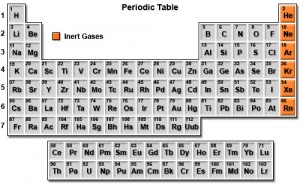 Heavy elements in ancient stars. The most distant stars, which are said to date nearly to the time of the Big Bang explosion, are not exploding, and yet they contain heavier elements. With the Hubble Space telescope, we can now see almost as far out in space as the beginning of the Darwinists’ theoretical time, nearly the beginning of the supposed Big Bang. But, as with nearby stars, the farthest ones appear to be “second-generation” or “population II” stars, they have heavier elements, and they are not exploding any more frequently than nearby stars.
Heavy elements in ancient stars. The most distant stars, which are said to date nearly to the time of the Big Bang explosion, are not exploding, and yet they contain heavier elements. With the Hubble Space telescope, we can now see almost as far out in space as the beginning of the Darwinists’ theoretical time, nearly the beginning of the supposed Big Bang. But, as with nearby stars, the farthest ones appear to be “second-generation” or “population II” stars, they have heavier elements, and they are not exploding any more frequently than nearby stars.
Supernovas do not throw off enough matter to make additional stars. There are not many stellar explosions and most of them are small-star (nova) explosions. Yet novas cast off very little matter. A small-star explosion only loses a hundred-thousandth of its matter; a supernova explosion loses about 10 percent; yet even that amount is not sufficient to produce all the heavier elements found in the planets, interstellar gas, and stars. Therefore, supernovas, the theory’s fuel source for nearly all the elements in the known universe, occur far too infrequently and produce far too small an amount of heavy elements to produce the vast amount that exists in the universe.
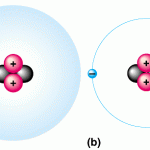 Only hydrogen and helium have been found in the outflowing gas from supernova explosions. The theory requires lots of supernova explosions in order to produce heavy elements. But there are not enough supernovas, and research further indicates that supernovas do not produce heavy elements. All that was needed was to turn a spectroscope toward an exploded supernova and analyze the elements in the outflowing gas from the former star. Back in 1982, researchers did that and found that the Crab nebula that resulted from an A.D. 1054 supernova only has hydrogen and helium. Darwinists had theorized that the temperature of the supernova explosion would generate high enough heat to bridge the gaps at mass 4 and 8. The nebula evidences that, regardless of the temperature of the explosion, the helium mass 4 gap was never bridged.
Only hydrogen and helium have been found in the outflowing gas from supernova explosions. The theory requires lots of supernova explosions in order to produce heavy elements. But there are not enough supernovas, and research further indicates that supernovas do not produce heavy elements. All that was needed was to turn a spectroscope toward an exploded supernova and analyze the elements in the outflowing gas from the former star. Back in 1982, researchers did that and found that the Crab nebula that resulted from an A.D. 1054 supernova only has hydrogen and helium. Darwinists had theorized that the temperature of the supernova explosion would generate high enough heat to bridge the gaps at mass 4 and 8. The nebula evidences that, regardless of the temperature of the explosion, the helium mass 4 gap was never bridged.
An explosion of a star would not produce another star. It has been theorized that supernova explosions would cause nearby gas to compress and form itself into new stars. But if a star exploded, it would only shoot outward in every direction and any gas encountered would be pushed along the leading edge of the event horizon.
The Truth:
In ten days, I will celebrate yet another birthday. On the 25th of this month, our tradition allows that we will commemorate an even more important birthday…the most important birthday. His birthday, in fact, is the basis for celebrating our own birthdays. How apt and appropriate to discuss the birth of stars, then, on this first Sunday of this month.
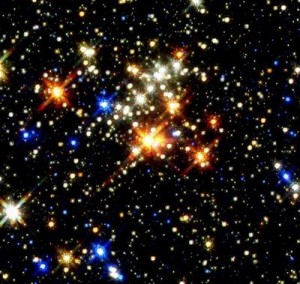 Throughout recorded history, man has peered up at the night sky and recorded his observations. The Egyptians worshiped stars like Sirius and were very careful about keeping records of the heavens. The Persians, also, were very careful and kept highly detailed records of the movements of heavenly bodies. The Chinese culture, fully 4700 years old, accurately records comets, novas, and supernovas that appeared above the earth as far back as thousands of years ago.
Throughout recorded history, man has peered up at the night sky and recorded his observations. The Egyptians worshiped stars like Sirius and were very careful about keeping records of the heavens. The Persians, also, were very careful and kept highly detailed records of the movements of heavenly bodies. The Chinese culture, fully 4700 years old, accurately records comets, novas, and supernovas that appeared above the earth as far back as thousands of years ago.
In all of recorded time, with all of the human records of stars exploding, comets appearing, meteor showers dusting the night sky, and all manner of occurances in the skies above, there is only one recorded instance of a star ever appearing. Just one. That star heralded the birth of the King of Kings.
Matthew 2:1-2 Now after Jesus was born in Bethlehem of Judea in the days of Herod the king, behold, wise men from the East came to Jerusalem, saying, “Where is He who has been born King of the Jews? For we have seen His STAR in the East and have come to worship Him.”
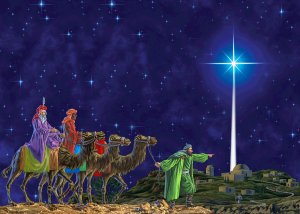 The appearance of THAT star is recorded in the cosmological records of every single human culture that peered into the heavens. Every single year, Darwinists scramble to explain it based on some “natural” means through more and more hair-brained hypotheses. That is probably an ardous task when one considers that Darwinists cannot even explain how any of the other trillions upon trillions of stars in the universe might have sprung into existence without being created by God.
The appearance of THAT star is recorded in the cosmological records of every single human culture that peered into the heavens. Every single year, Darwinists scramble to explain it based on some “natural” means through more and more hair-brained hypotheses. That is probably an ardous task when one considers that Darwinists cannot even explain how any of the other trillions upon trillions of stars in the universe might have sprung into existence without being created by God.
Matthew 2:10 When they saw the STAR, they rejoiced with exceedingly great joy.
Peer into the night sky, beloved, and witness the tapestry of light created by the One who loves you enough to send His only begotten Son, a living sacrifice, in atonement for the sins of our fallen world. The heavens declare His glory. Rejoice with exceedingly great joy that you know the truth and are granted God’s mercy and grace.
God bless you and yours. Gregg
Resources:
Additional Posts dealing with Creation and Darwinism


Your explanation on stellar evolution was satisfactory
Thanks, Johnson. I appreciate the feedback. Be sure to check back each Sunday for updates to this continuing series.